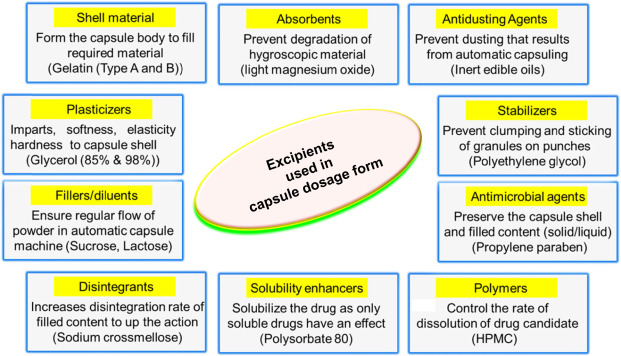In the world of “clean label” supplements and minimalist or short ingredient lists, there is one word that has developed a bad reputation: excipients or fillers.
It is thus common to hear people say, “I only want active ingredients, no fillers!”
or come accross brands that claim “No fillers or no excipients” in their narrative.
But here’s the reality: not all so-called “excipients” are created equal.
Many are actually functional excipients, carefully chosen ingredients that serve a purpose beyond just “bulking” a formula.
As someone who develops products from scratch, I am often asked to “formulate with no excipients” or “only use natural ones.” It’s a fair request—and it reflects the growing demand for transparency and simplicity in supplements.
What Are Excipients, Really?
Terms like excipients and fillers are often used interchangeably by consumers. However, they are not the same. That is why I would like to define these terms:
Excipients are inactive ingredients that support product function. They help powders mix, remain free-flowing, give flavour and sweetness and help powders stay stable.
Fillers are an example of an excipient and is used to bulk up a dose when the active ingredient is present in small amounts.
Examples of fillers include:
-
-
Microcrystalline cellulose (MCC)
-
Dicalcium phosphate
-
Lactose
- Maltodextrin
-
Both play essential roles in making supplements effective, consistent, and consumer-friendly.
Examples of Excipients
Let us take a look at a few common excipients and why they are used in supplements
| Excipient | Purpose |
|---|---|
| Maltodextrin | Acts as a carrier for flavorings or vitamins. Also improves solubility. However, it is also used as a cheap bulking agent in products in which its use is to make the product more affordable (e.g. Whey Protein). |
| Lecithin (e.g., sunflower) | Emulsifier to help fats blend evenly and improve powder dispersibility. However, there are often concerns around Lecithin of soy origin which may be from GMO sources. |
| Silicon Dioxide | Anti-caking agent to prevent clumping in powders. |
| Magnesium Stearate | Used in capsules and tablets for flow and consistency during production |
| Acacia Gum | Stabiliser (thickener) in powder, used to improve mouthfeel. |
| MCT powder | Fat source for energy and creamy mouthfeel |
| Non-caloric Sweeteners | Provides sweetness and supports palatability without sugar (e.g. Sucralose, Stevia, Acesulfame-K) |
Why “No excipients” can often compromise quality
In some cases, avoiding all excipients results in:
-
Clumpy powders that won’t mix
-
Settling in liquids or uneven doses
-
Unpleasant textures that turn people off the product
-
Inconsistent manufacturing-leading to dosing variability
This is especially true in protein shakes, hydration powders, and multi-ingredient blends. The more complex the formula, the more crucial smart excipient use becomes.

Excipients used in capsule dosage forms. From Kar et al. (2019)- see reference list.
“Yes, excipients serve a purpose. But are the ones used good or bad for health?”
As we have seen, excipients do serve a function.
But an important question to ask is whether the specific ones used are healthy or appropriate, especially when consumed regularly.
This is where formulation ethics and ingredient quality become crucial.
While most excipients are GRAS (Generally Recognised As Safe) by regulatory bodies like the FDA or EFSA, not all are equal when it comes to their long-term health impact, especially for sensitive populations, or when used in regular supplement routines (e.g., 2–3 servings per day over months).
Here are a few points to consider:
Some excipients with potential health concerns:
-
Titanium Dioxide: Often used for whitening tablets or capsules, now banned in food products in the EU due to possible negative effect on DNA (genotoxicity).
-
Artificial Sweeteners (e.g., Aspartame, Acesulfame K): Still widely used in sports nutrition for taste masking, but their impact on gut health and metabolic health is under increasing scrutiny.
-
PEGs (polyethylene glycols): historically used in some softgel formulations and as additives in flavours (even natural ones) but raise concerns due to their synthetic and petroleum origins.
Health-Conscious Alternatives
More responsible brands and formulators now look to:
-
Natural emulsifiers like sunflower lecithin instead of soy
-
Natural sweeteners like stevia, or even sugar (in formulations where it is justifiable) instead of artificial ones
-
Plant-based flow agents like rice flour in place of silicon dioxide.
-
Functional excipients that add value (e.g., inulin as prebiotic fibre and bulking agent)
As a formulator, I never use an excipient without a reason. In fact, I often:
-
Choose functional carriers like glycine or fiber over plain maltodextrin
-
Use natural binders and gums instead of synthetic ones
In many of my formulas, I also opt for dual-purpose excipients—those that serve both a functional and a nutritional role (e.g., glycine as a flavor smoother and calming amino acid).
Final Word
In a perfect world, we’d only need actives. But in the real world—where taste, usability, shelf-life, and dosing matter, excipients play a key role.
Used correctly, they’re not shortcuts. They are there for a purpose.
However, be cautious with brands that brag about “no fillers” but offer clumpy, unpleasant, or unstable products
Reference
Kar, M., Chourasiya, Y., Maheshwari, R. and Tekade, R.K. (2019). Chapter 2 – Current Developments in Excipient Science: Implication of Quantitative Selection of Each Excipient in Product Development. [online] ScienceDirect. Available at: https://www.sciencedirect.com/science/article/abs/pii/B9780128179093000029

To view my Professional Profile on LinkedIn: please click here
To see my latest product creations: www.bioteenhealth.com
To view my Scientific Publications on PubMed: please click here
To get in touch, please write to: info@supplementscientist.com
Follow supplementscientist.com on Facebook: please click here
Disclaimers
Medical: The information presented on this website is intended for adults 18 or over. Its aim is purely educational and does not constitute medical advice. Please consult a medical or health professional before you begin any program related to exercise, nutrition, or supplementation especially if you have a medical condition. If you consume any product mentioned on our site, you do so on your own free will, and you knowingly and voluntarily accept the risks.
Other: The views expressed in this blog article are solely mine and do not represent the opinions or positions of any company or institution with which I am associated. Any information or opinions provided are based on my personal experiences, research, and understanding. I strive to ensure accuracy and reliability of the information provided.
© 2025. Supplementscientist.com







Leave a Reply